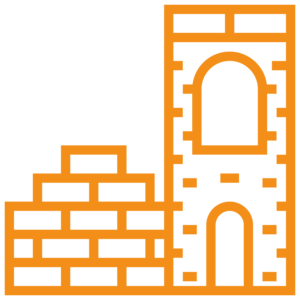The Highest Tower
Goal
Materials
Instructions
Flow
Organize teams. Allocate participants to equal-sized teams. Ask members of each team to sit around a table.
Distribute building materials. Give each team a collection of materials.
Give the instruction. Make sure the participants are paying attention. Tell the teams, “Your objective is to build the highest tower using the materials on the table. Your tower will not be compared with other teams' towers. You have 30 minutes to complete your tower.”
Do not answer any question. Repeat the instructions once more. Explain that you will not be answering questions during the activity.
Get them started. Give time warnings at the end of 15 minutes, 25 minutes, and 29 minutes. Stop the activity after exactly 30 minutes.
Take measurements. Depending on how competitive the group is, you may measure the height of each tower. Alternatively, you may skip this step and proceed directly to the debriefing discussion.
Debrief
Invite participants to reflect about the activity and participate in a discussion. Use this standard set of debriefing questions:
- How do you feel?
- What happened?
- What did you learn?
- How does this relate to the real world?
- What if…? (Explore alternative scenarios.)
- What next?
Here are some additional questions that you may want to use:
- What assumptions did you and your teammates make? Which of these assumptions were crippling and which ones were empowering?
- What ideas and strategies worked well?
- What would you do differently next time?
- How did you define success in this activity? How did this definition affect your strategy, actions, and results?
- How could you have created more value? How could you have added more people, time, materials, and other resources to better pursue the objective?
- What types of communication challenges did you face? How did you handle them?
Learning Points
Steer the debriefing discussion toward the value of questioning assumptions. Use these types of questions to challenge the participants:
- During the activity, were we competing as individuals, as teams, as a whole group, or as humans?
- Is it useful to see this activity as a competition?
- What exactly did building the highest tower mean? Does it mean
- building the highest free-standing tower
- building the highest tower, but not necessarily free-standing
- building the tower on top of anything in the room, building, city, country, or world (as on top of Mount Everest)
- writing the words “The Highest Tower”
- building any tower and naming it “The Highest”
- Did you consider trading or sharing resources with the other tables?
- Did you consider bringing all resources in the room together?
Variations
The Highest Tower is a framegame to be adapted for a variety of contexts and purposes. Depending on the specific focus and interests of the group, you may vary this game to feature different learning points. You can reinforce these points through appropriate debriefing questions.
Here are some examples of potential variations:
Other tasks. Building “the highest tower” creates a good opportunity for teamwork and for challenging assumptions. Depending on the context and objectives, other tasks could work equally well or even better. For example, you may ask the participants to build the strongest tower, the longest bridge, the most compelling business presentation, or the most exciting story.
Diversity. Establish rules about communication that create a cross-cultural environment within and across the teams. For example, some participants can only talk, others can only write, and others can only use gestures. During the debriefing discussion, extract learning points that can be associated with real life cross-cultural situations.
Communication. You can create obstacles to communication by making the participants work blindfolded or by using instant messaging only. During the debrief discuss how communication variables affect the definition of success.
Different resources. Distribute different building materials to different individuals or tables. During the debriefing, discuss how access to different resources in real life is used as an excuse to complain about injustice or as an empowering opportunity for collaboration.
Adversity. Create a chance event 10 minutes before the end that disrupts the normal building process. For example, you can announce a cyclone and go around the tables pushing each tower and throwing it down. However, be careful not to antagonize the participants and losing your trust level. During the debrief, discuss how the participants dealt with the disruptive situation and whether the event increased the anxiety level of the teams.
Team changes. After about 15 minutes, ask some or all participants to rotate around the tables, totally redistributing the participants.
Background
Source: Thiagi Group



Comments (0) (4.0 avg / 1 ratings)